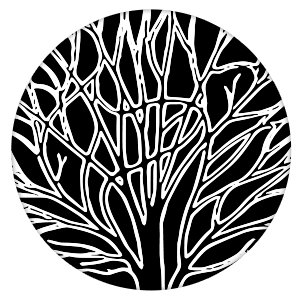Dynamic Models of Human Systems
Reading List / References
While all of the references below would be of interest to advanced students, those that are starred (*) indicate titles useful to a general audience.
*Adams, C., J. Hass and A. Thompson. (1998). How to ace calculus: The streetwise guide, Macmillan.
Allen, M. R., V. R. Barros, J. Broome, W. Cramer, R. Christ, J. A. Church, L. Clarke, Q. Dahe, P. Dasgupta and N. K. Dubash. (2014). IPCC fifth assessment synthesis report-climate change 2014 synthesis report.
Anderson, R. M. and R. M. May. (1992). Infectious Diseases of Humans: Dynamics and Control. New York, Oxford University Press.
Bedia, J., S. Herrera and J. M. Gutiérrez. (2013). Dangers of using global bioclimatic datasets for ecological niche modeling. Limitations for future climate projections. Global and Planetary Change 107:1-12.
*Berkes, F., J. Colding and C. Folke. (2000). Rediscovery of traditional ecological knowledge as adaptive management. Ecological Applications 10(5):1251-1262.
Bernoulli, D. (1790). Essai d’une nouvelle analyse de la mortalité causée par la petite vérole et des avantages de l’inoculation pour la prévenir. Mémoires de Mathématiques et de Physique, Académie Royale des Sciences, Paris. pp. 1-45.
*Boyd, R. (1972). World Dynamics: A Note. Science 177(4048):516-519.
Burnham, K. P. and D. Anderson. (2002). Model Selection and Multi-model Inference. Berlin, Springer Verlag.
*Catton, W. R. (1982). Overshoot: The ecological basis of revolutionary change, University of Illinois Press.
*Crutzen, P. J. (2006). The “Anthropocene”. IN E. Ehlers and T. Krafft (eds), Earth System Science in the Anthropocene. Springer, Berlin, Heidelberg. pp. 13-18.
Efferson, C. (2008). Prey-producing predators: The ecology of human intensification. Nonlinear Dynamics, Psychology, and Life Sciences(12):55-74.
*Efferson, C. and P. J. Richerson. (2007). A prolegomenon to non-linear empiricism in the human sciences. Biology and Philosophy 22(1):1-33.
Forrester, J. W. (1961). Industrial Dynamics. Waltham, MA: Pegasus Communications.
Forrester, J. W. (1969). Urban Dynamics. Cambridge MA, MIT.
*Forrester, J. W. (1971). World Dynamics. Cambridge, MA, Wright-Allen Press
*Fuller, R. B. (1963). Operating Manual for Spaceship Earth. New York, Dutton.
Galor, O. and D. N. Weil. (2000). Population, technology, and growth: From Malthusian stagnation to the demographic transition and beyond. 90(4):806-828.
Hethcote, H. W. (2000). The mathematics of infectious diseases. SIAM Review 42(4):599-653.
*Holling, C. S. (1978). Adaptive environmental assessment and management, John Wiley & Sons.
Kermack, W. O. and A. G. McKendrick. (1927). A contribution to the mathematical theory of epidemics. Proceedings of the royal society of london. Series A 115(772):700-721.
Korotayev, A. V., A. S. Malkov and D. A. Khaltourina. (2006). Introduction to Social Macrodynamics: Secular Cycles and Millennial Trends.
*Leijonhufvud, A. (1997). Models and theories. Journal of Economic Methodology 4(2):193-198.
Lessler, J., A. S. Azman, M. K. Grabowski, H. Salje and I. Rodriguez-Barraquer. (2016). Trends in the mechanistic and dynamic modeling of infectious diseases. Current Epidemiology Reports 3(3):212-222.
May, R. M. and R. M. Anderson. (1979). Population biology of infectious diseases: Part II. Nature 280(5722):455.
*Meadows, D. (1999). Leverage points: Places to intervene in a system. The Sustainability Institute.
*Meadows, D., J. Randers and D. Meadows. (2004). Limits to Growth: The 30-Year Update, Chelsea Green Publishing.
*Meadows, D. H., J. Randers, D. L. Meadows and W. W. Behrens III. (1972). The Limits to Growth: A Report for the Club of Rome's Project on the Predicament of Mankind.
Nordhaus, W. D. (1992). An optimal transition path for controlling greenhouse gases. Science 258:1315-1315.
*Ortmans, O., E. Mazzeo, K. Meshcherina and A. J. C. Korotayev. (2017). Modeling Social Pressures Toward Political Instability in the United Kingdom after 1960: A Demographic Structural Analysis. Cliodynamics 8(2).
Peckham, R. (2013). Contagion: epidemiological models and financial crises. Journal of Public Health 36(1):13-17.
Pezzey, J. (1992). Sustainable Development Concepts: An Economic Analysis. The International Bank for Reconstruction and Development/The World Bank.
*Randers, J. (2012). 2052: A Global Forecast for the Next Forty Years, Chelsea Green Publishing.
Richerson, P. J. (2018). An integrated Bayesian theory of phenotypic flexibility. Behavioural Processes 161:54-64.
*Richerson, P. J. and R. Boyd. (1987). Simple models of complex phenomena: The case of cultural evolution. IN J. Dupré (ed), The Latest on the Best: Essays on Evolution and Optimality. Cambridge, MIT Press. pp. 27-52.
*Richerson, P. J. and R. Boyd. (1998). Homage to Malthus, Ricardo, and Boserup: toward a general theory of population, economic growth, environmental deterioration, wealth, and poverty. Human Ecology Review 4(85-90).
Ross, R. (1911). The prevention of malaria, John Murray; London.
Solow, R. M. (1956). A Contribution to the Theory of Economic Growth. The Quarterly Journal of Economics 70(1):65-94.
Steffen, W., W. Broadgate, L. Deutsch, O. Gaffney and C. Ludwig. (2015). The trajectory of the Anthropocene: The Great Acceleration. The Anthropocene Review 2(1):81-98.
Turchin, P. (2003). Historical Dynamics. Princeton, Princeton University Press.
*Turchin, P. (2015). Ultrasociety: How 10,000 years of war made humans the greatest cooperators on earth, Smashwords Edition.
*Turchin, P. (2016). Ages of discord. Chaplin, CT, Beresta Books.
*Turchin, P. and S. A. Nefedov. (2009). Secular Cycles. Princeton, N.J., Princeton University Press.
Vynnycky, E. and R. White. (2010). An introduction to infectious disease modelling, Oxford University Press.
Walters, C. J. and C. S. Holling. (1990). Large-Scale Management Experiments and Learning by Doing. Ecology 71(6):2060-2068.
This project was supported by Grant #61105 from the John Templeton Foundation to the University of Tennessee, Knoxville (PIs: S. Gavrilets and P. J. Richerson) with assistance from the Center for the Dynamics of Social Complexity and the National Institute for Mathematical and Biological Synthesis at the University of Tennessee, Knoxville.

The Cultural Evolution Society's Online Learning Tutorial Series is licensed under a Creative Commons Attribution-NonCommercial-ShareAlike 4.0 International License. For designers' contact information, click here.



